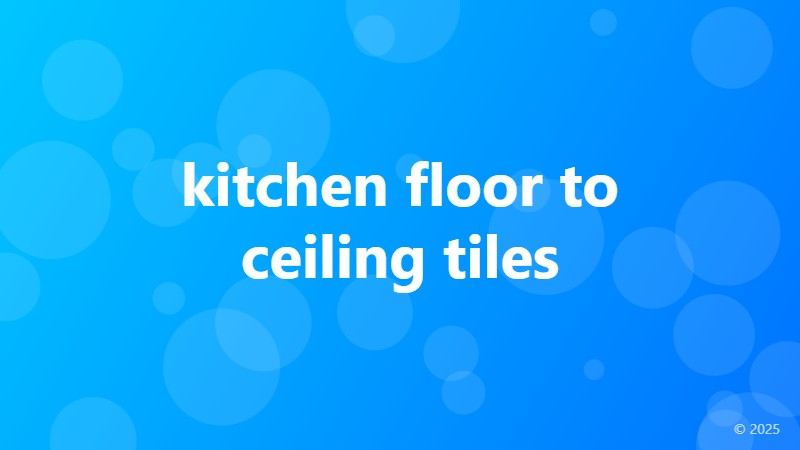kitchen floor to ceiling tiles

Why Kitchen Floor to Ceiling Tiles are a Game-Changer
When it comes to kitchen design, one of the most crucial elements to consider is the flooring. Not only does it set the tone for the entire space, but it also needs to be durable, easy to clean, and resistant to heavy foot traffic. That's where kitchen floor to ceiling tiles come in – a design trend that's gaining popularity for all the right reasons.
The Benefits of Kitchen Floor to Ceiling Tiles
So, what makes kitchen floor to ceiling tiles so special? For starters, they create a sense of continuity and visual flow, making the space feel more expansive and open. By using the same material for both the floor and walls, you can create a seamless transition that eliminates the need for awkward transitions or unsightly grout lines.
Another significant advantage of kitchen floor to ceiling tiles is their ease of maintenance. With a single, unified surface, cleaning becomes a breeze – simply sweep and mop the entire area without worrying about separate surfaces or crevices. This is especially important in high-traffic areas like the kitchen, where spills and messes are a regular occurrence.
Design Flexibility with Kitchen Floor to Ceiling Tiles
One of the most exciting things about kitchen floor to ceiling tiles is the design flexibility they offer. With a vast range of materials, colors, and patterns to choose from, you can create a look that's uniquely yours. From sleek and modern glass or ceramic tiles to rustic, natural stone or brick-inspired designs, the possibilities are endless.
Want to add some visual interest to your kitchen? Try mixing and matching different tile patterns or colors to create a unique, mosaic-inspired look. Alternatively, opt for a single, statement-making material like marble or quartz to create a sophisticated, high-end aesthetic.
Practical Considerations for Kitchen Floor to Ceiling Tiles
While kitchen floor to ceiling tiles are undoubtedly stylish, it's essential to consider the practical implications of this design choice. For example, you'll need to ensure that the material you choose is suitable for both floors and walls, taking into account factors like durability, moisture resistance, and weight capacity.
Additionally, be mindful of the installation process, which may require specialized labor and equipment. It's essential to work with a reputable contractor or tile specialist to ensure a seamless, professional-looking finish.
Conclusion
Kitchen floor to ceiling tiles are a design trend that's here to stay – and for good reason. By offering a unique blend of style, functionality, and practicality, they can elevate your kitchen from ordinary to extraordinary. So why settle for a bland, cookie-cutter design when you can create a space that's truly one-of-a-kind?